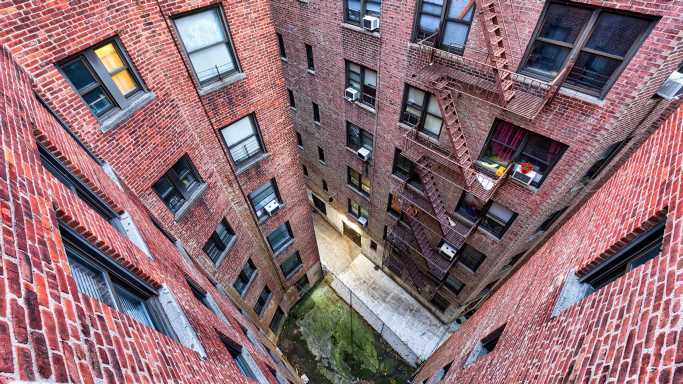
States With the Worst Housing Shortages for Low Income Americans
June 13, 2023If you are a renter in the United States, finding an affordable and available roof to live under is a real and persistent issue — and it is more of an issue for low-income renters. In fact, no state has succeeded in adequately resolving the shortage of affordable rental units for the most financially-vulnerable Americans. (Also see, American cities where renting is least affordable.)
The U.S. faces a shortage of about 7.3 million homes for extremely income-constrained renters — those earning incomes at or below either the federal poverty guideline or 30% of their area median income, whichever is greater. In 49 states, at least 60% of low-income renter households are “severely cost burdened,” meaning they pay more than half of their income to a landlord.
To identify the states with the worst supply of affordable housing for low-income renters, 24/7 Wall St. reviewed the number of affordable and available rental homes per 100 extremely low-income renter households from the “Gap Report,” an annual study of affordable housing by the National Low Income Housing Coalition. All data came from the report except for median household income and population, which came from U.S. Census Bureau’s 2021 American Community Survey.
In Texas, for example, there are only 25 affordable and available residential rental units for every 100 extremely low-income renter households. The situation is worse in the state’s larger cities. There are fewer than 20 affordable and available units for per 100 extremely low-income household renters in the metropolitan and suburban areas of Austin, Dallas, and Houston.
In California — which is often compared to Texas because the states have the country’s two largest populations and often have opposing views on public policies — the situation is not much better. There are 24 affordable residential rental units for every 100 extremely low-income renters in California, a state with a median household income of nearly $85,000.
California has only slightly more affordable and available units for extremely low-income renters in its larger cities compared to Texas’ largest cities. There are only 19 to 20 affordable and available rental units per 100 of economically constrained renter households in the metropolitan and suburban areas of San Diego, Los Angeles, and Riverside. (This is the city in each state with the most people on food stamps.)
Though this problem permeates across the country, the situation is more dire in high-population states. In the top 10 most populated states, where 54% of the country’s population live, there is an average of 33 affordable, available rental homes for every 100 extremely low-income renter households — from 23 per 100 in Florida to 40 per 100 in Ohio. That compares to an average of 43 affordable rentals per 100 extremely low-income households, from 27 per 100 in Delaware to 58 per 100 in South Dakota.
Interestingly, there appears to be little or no relationship between statewide median income and availability of affordable rental units for the extremely poor. Nevada, which leads the country in statewide unavailability of affordable rentals for low-income residents — at 17 per 100 — has almost the same median household income as South Dakota, the state with the highest number of available and affordable homes, at 58 per 100 extremely low-income renter households.
There is no state that has an adequate supply of affordable rental housing for the lowest income renters.
Sponsored: Find a Qualified Financial Advisor
Finding a qualified financial advisor doesn’t have to be hard. SmartAsset’s free tool matches you with up to 3 fiduciary financial advisors in your area in 5 minutes. Each advisor has been vetted by SmartAsset and is held to a fiduciary standard to act in your best interests. If you’re ready to be matched with local advisors that can help you achieve your financial goals, get started now.
Source: Read Full Article


